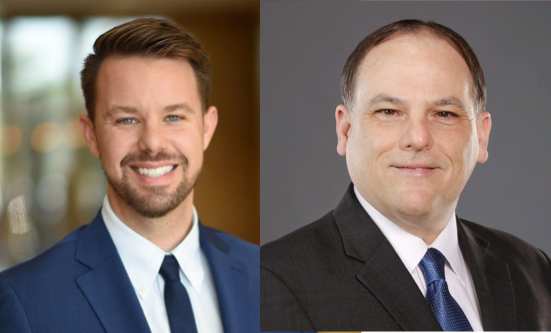Cambios directivos en Texas para BBVA USA
| Por Gabriela Huerta | 0 Comentarios

BBVA USA realizó cambios directivos en Texas. Jon Rebello ha sido nombrado CEO de Austin, mientras que Dillan Knudson, hasta ahora CEO de Austin, se volvió CEO de Houston, ambos supervisarán las operaciones de banca comercial y global wealth del banco en sus respectivas regiones.
Rebello fue anteriormente el CEO del banco de la Región de la Costa del Golfo y la Frontera de Texas, donde supervisó los mercados de El Paso, Laredo, Valle del Río Grande, Corpus Christi y Beaumont.
«Jon tiene más de 25 años de experiencia bancaria en mercados económicamente diversos, lo que se ha traducido en un amplio éxito no solo para el banco, sino también para nuestros clientes», dijo Jeff Dudderar, ejecutivo de BBVA USA para la región de Texas. «Las operaciones del banco en la región de la frontera de Texas y la costa del golfo experimentaron un enorme crecimiento bajo su liderazgo, y estamos ansiosos por ver qué hace para elevar aún más nuestro mercado de Austin. Austin es un área clave para la misión del banco de crear oportunidades, y el equipo de Jon prosperará gracias a su experiencia. También quiero felicitar a Dillan Knudson por el fantástico trabajo que hizo al aumentar nuestra presencia en Austin. Sé que tendrá el mismo efecto en Houston, el mercado más grande de nuestro banco. Su trabajo para llevar las operaciones del banco de Austin al siguiente nivel habla por sí mismo. Houston, como Austin, es un área floreciente que presenta amplias oportunidades, no solo para el crecimiento del banco, sino también para el éxito financiero de nuestros clientes. Tengo plena confianza en que Dillan y su equipo pueden alcanzar y superar estos objetivos».
Rebello ha estado con BBVA USA durante 18 años, y en un momento también se desempeñó como presidente del mercado del Bajo Valle del Río Grande del banco. La mayor parte de su carrera en la banca se ha centrado en las responsabilidades comerciales y de gestión del patrimonio.»Siempre tendré un lugar especial en mi corazón para las regiones de la frontera de Texas y la costa del Golfo, y para las personas que estaban en mi equipo», dijo Rebello. «He estado con BBVA durante casi 20 años, y con todo lo que está sucediendo en Austin, estoy realmente entusiasmado con esta oportunidad. El momento es perfecto».
Knudson se unió a BBVA como oficial de productos de crédito en la oficina de Houston en 2011. Desde entonces, ha ocupado diversos puestos de producción y liderazgo para el banco en Phoenix, Arizona, Ontario, California, y Austin, Texas. «Este movimiento significa una transición de círculo completo de regreso al mercado donde comenzó mi carrera en BBVA», dijo Knudson. «Me siento honrado por la oportunidad de servir al área de Houston y espero reunirme con tantos amigos y colegas en toda la región».










